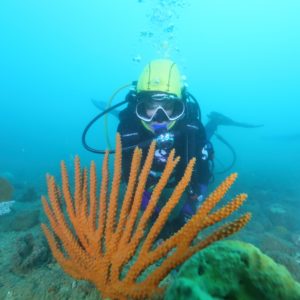
A 3rd year PhD candidate at Flinders University, and the University of Haifa in Israel under a Cotutelle agreement. For those not familiar with Cotutelle PhDs, a Cotutelle is a partnership between two universities where a student is jointly enrolled at both universities and awarded a doctorate.
In my PhD research, I am analysing different international methodological approaches for the identification and study of archaeological sites submerged by postglacial sea-level rise. The opportunity to be enrolled at a university in Israel has provided me with hands-on experience working on submerged Neolithic settlements off the Carmel Coast of Israel, and my research at Flinders has enabled me to participate in the Deep History of Sea Country project (DHSC), which identified the first ancient Aboriginal archaeological sites under water in Murujuga (the Dampier Archipelago).
Along with the exciting announcement and publication of the underwater sites in Murujuga, it has been a year full of milestones. I published my first first-author paper in Quaternary International, which outlines the survey approach undertaken by DHSC. It was quite daunting to lead a paper for the first time, but it has taught me a lot about the publication process and it’s very rewarding to see the results published. I’m incredibly fortunate to have had the guidance and support of the DHSC team throughout the process.
I have also recently received my first research grant, from the University of Haifa, the Sir Maurice Hatter and Lady Irene Hatter research grant. The grant is 20,000 NIS (or approximately $8000 AUD at the time of this blog post) to dedicate to researching submerged landscape archaeology, and in particular, this will assist in further research off the coast of Israel to understand how Neolithic communities adapted to sea-level rise, based on the material found at these now-submerged sites.
For all the difficulties in navigating a PhD in a global pandemic, 2020 has been a significant year for me with many ‘firsts’. It is a privilege to work on a variety of remarkable archaeological material, and with a diverse range of experts. I am extremely grateful to have had these opportunities through two universities.

